Astrophytum is a genus of cacti that contains six different species. These species are mainly found in North America
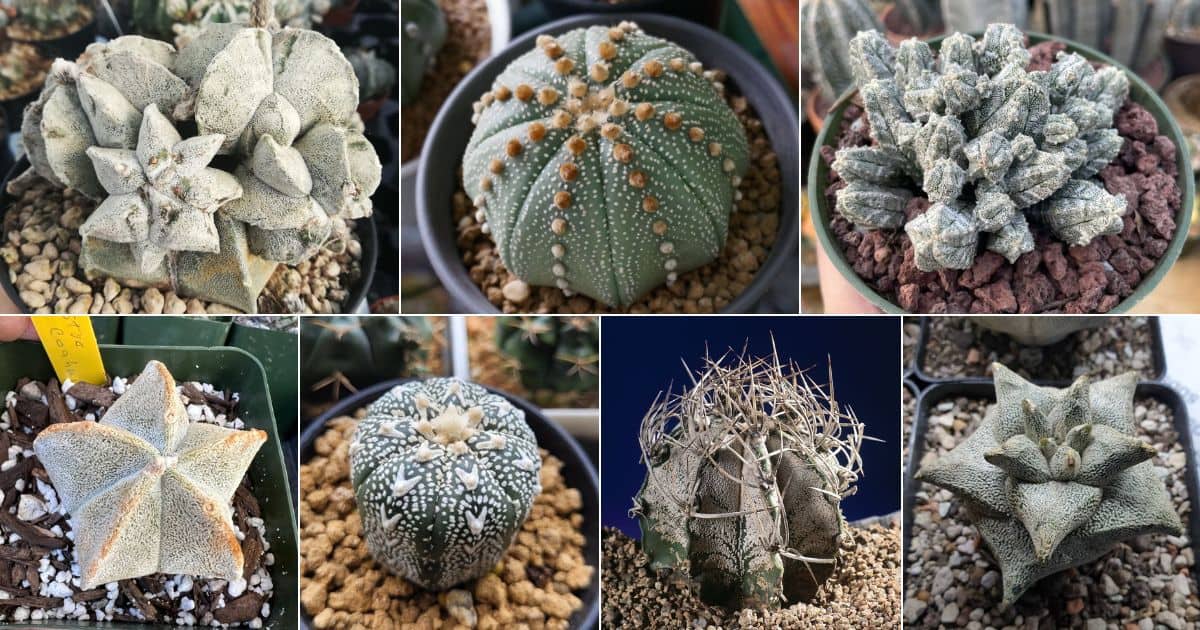
The common name of Astrophytum is ‘star cactus.’ This name is derived from the Greek origin of this cactus name which translates to ‘star plant’ in English.
All generally fall underneath the common name of star cactus
Jump to:
1. Astrophytum asterias
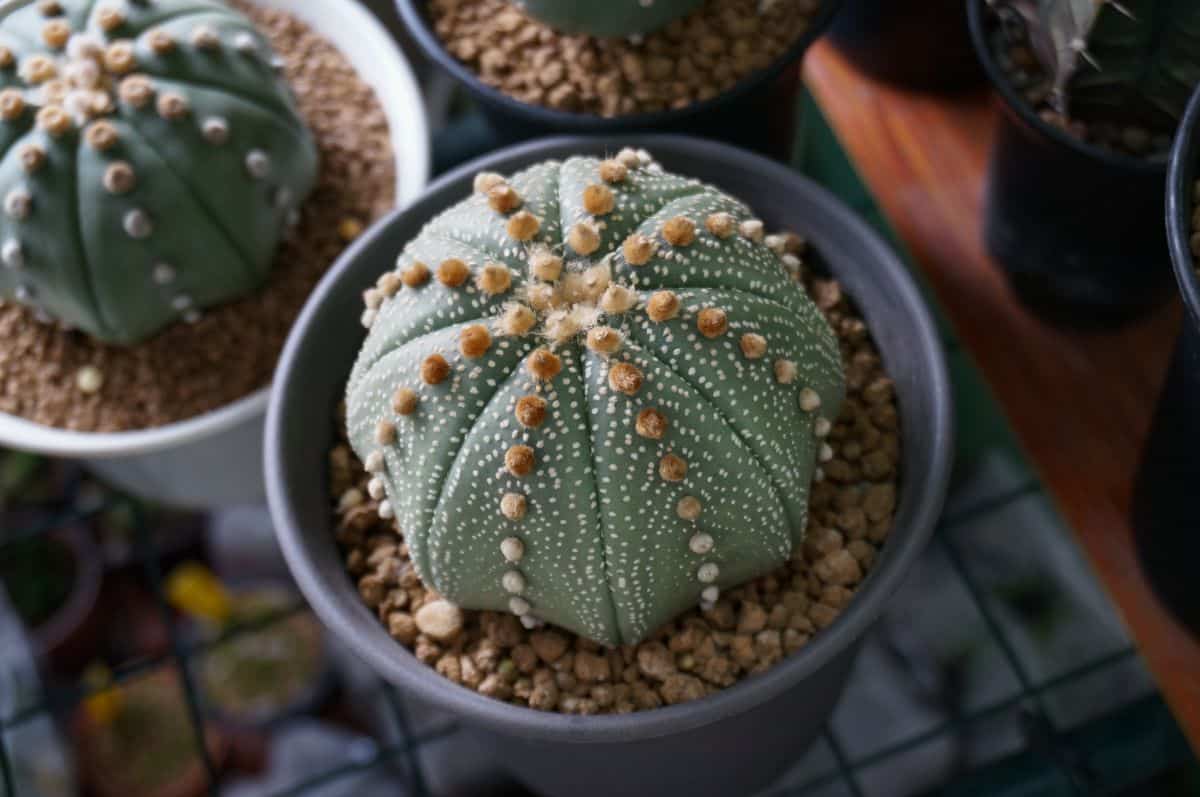
Buy it from:
| Maximum Height: | Up to 3 inches |
| Maximum Width: | Up to 6 inches |
| Watering Needs: | Responds best to the soak-and-dry method |
| Soil Needs: | Well-draining and gritty soil |
| Light Needs: | At least 6 hours of sun outdoors for best results |
| Hardiness Zone(s): | Zone 9 and up |
| Stem Shape: | Stays disc or globose shaped |
| Spines: | Responds best to the soak-and-dry method |
| Areole Distribution: | Small and fluffy, roughly evenly spaced, heavily felted |
| Scale Type: | White scales can be irregular or follow the flow of the segments in a parabolic shape. |
| Flower Type and Color: | May have multiple layers, red throat to the flower with dense collections of filaments at the center |
You can’t talk about astrophytums without addressing one of the first species to be discovered. The original Sand Dollar Cactus was a mystery for some time due to its sensitive nature and distinct barrel shape. Now, the Sea Urchin Cactus is coveted among collectors as horticulturists are keeping the species alive and developing some rather interesting cultivars.
Astrophytum asterias cv. Kikko
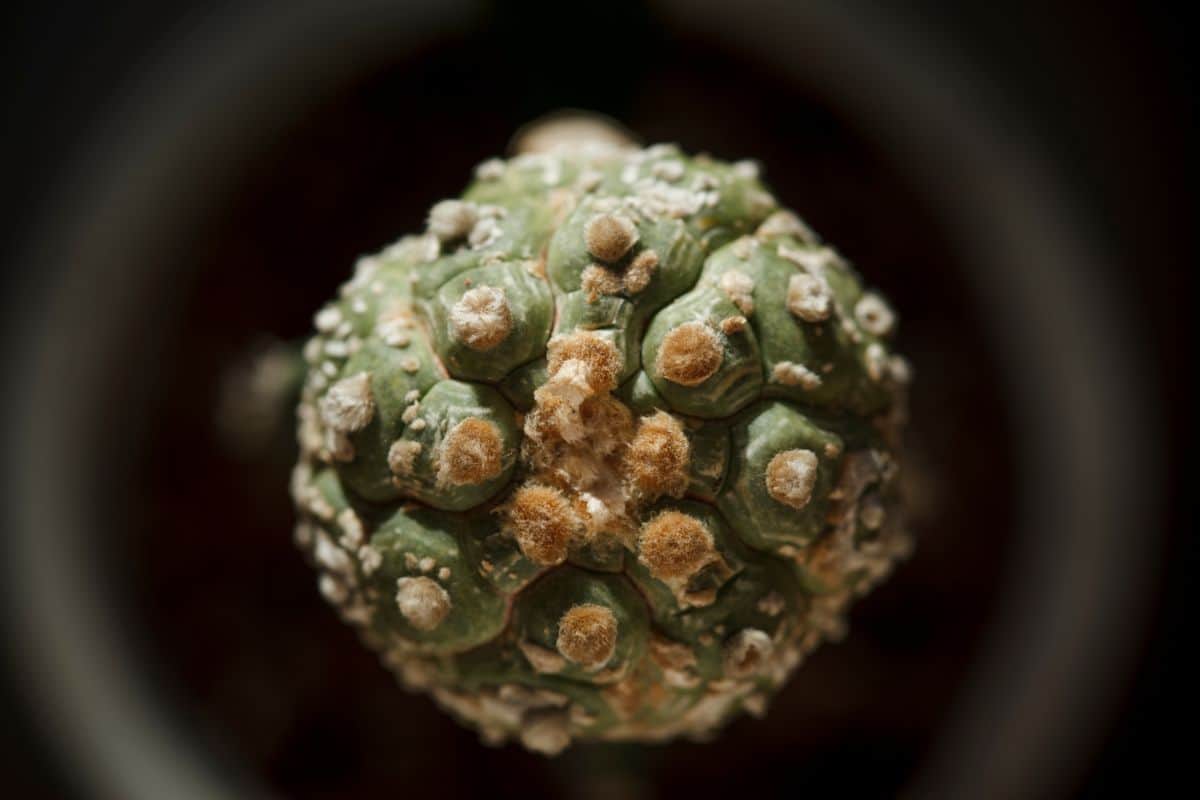
Buy it from:
While the cultivar Kikko maintains the major characteristics of growth, habitat, and environmental needs, it varies in the way that the stem is divided. Kikko variants, which refer to types of samurai aromor, tend to take on additional segments that occur with hexagonal delineation. As they grow, sometimes the segments will grow at differing rates which is part of the attraction of Kikko cultivars.
Astrophytum asterias cv. Superkabuto V type
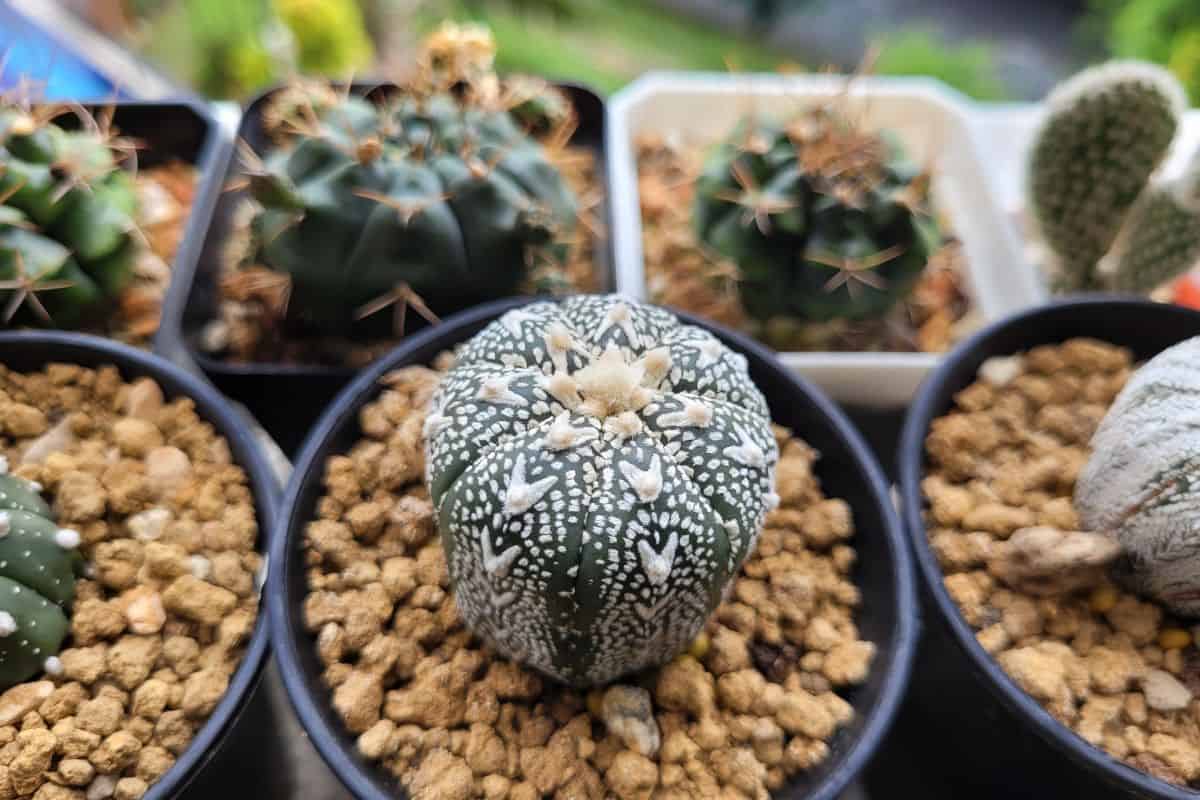
Buy it from:
Superkabuto is another major cultivar type for A. asterias. There are V types, solid types, and a whole world of variations. The different letters or symbols at the end of the cultivar name refers to the different patterns that the white scales take on. V type is perhaps the easiest to identify because it isn’t solid white and takes on very clear ‘v’ shapes along the ribs.
2. Astrophytum capricorne
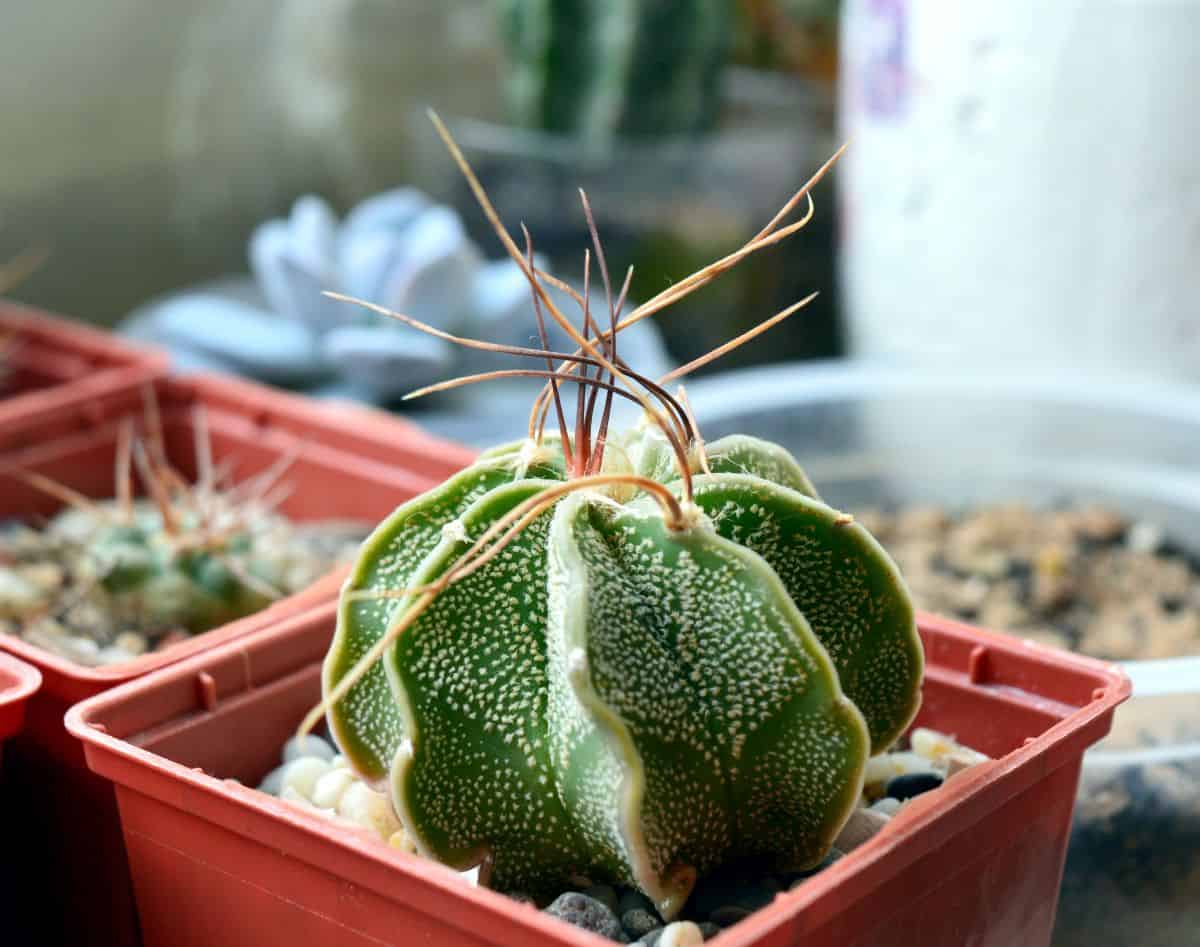
Buy it from:
| Maximum Height: | Up to four feet |
| Maximum Width: | Up to 4 inches |
| Watering Needs: | Responds best to the soak-and-dry method |
| Soil Needs: | Well-draining and gritty soil |
| Light Needs: | At least 6 hours of sun outdoors for best results |
| Hardiness Zone(s): | Zone 9 and up |
| Stem Shape: | Star to more oval shaped |
| Spines: | Very fragile with all cultivars; up to 3 inches long, flatten as they age and look like goat horns |
| Areole Distribution: | Vertical and evenly spaced rows along the 8 ribs |
| Scale Type: | Covered in ‘v’ shaped bands that vary in intensity |
| Flower Type and Color: | Broader than others in the species, deep red throat and bright yellow edges; multi-layered |
While not my absolute favorite of the astrophytum genus, the Goat’s Horns Cactus is definitely a fun species to look at. Sometimes the spines can curl and wave all around the entire column, much like a barrel cactus. The spines vary in color, orientation, and stiffness. The major thing to remember with this species and its variants is that the spines can be extremely fragile and take a long time to grow back.
Astrophytum capricorne var. Aureum
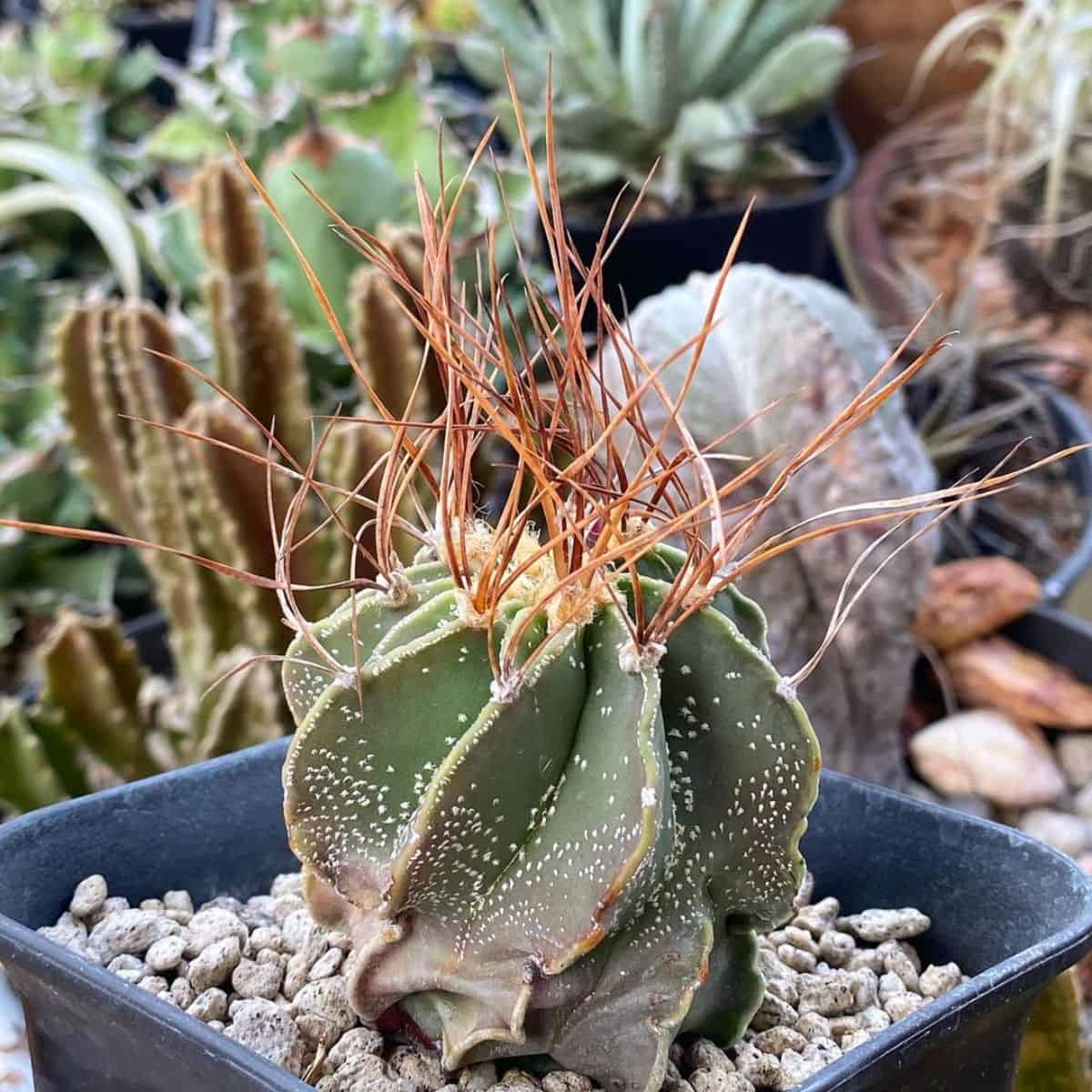
While A. capricorne is known for its wild spines, the Aureum variant is perhaps one of the wildest. Most A. capricorne are known for having the tops covered with spines, while most of the other areoles are rather spineless. This isn’t the case for var. Aureum. Straw-like spines curl and twist all along the entire stem.
Astrophytum capricorne var. Niveum
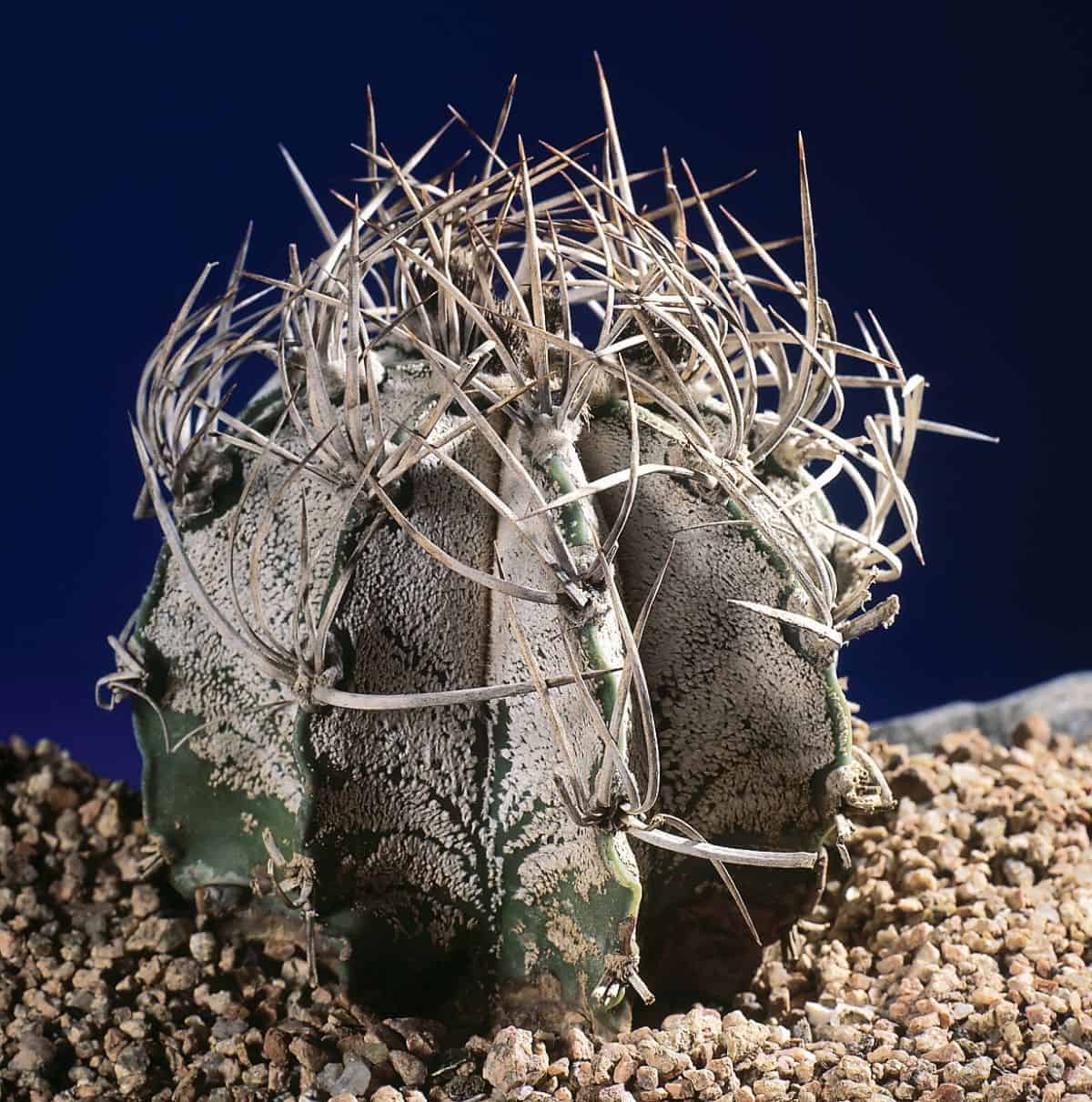
Buy it from:
The Niveum variant takes on some of the same characteristics of Aureum; however, it expresses more white scales in most cases and doesn’t have near as many spines. The spines at the top of more mature species tend to turn black, while older spines can turn to a straw or white color.
3. Astrophytum coahuilense
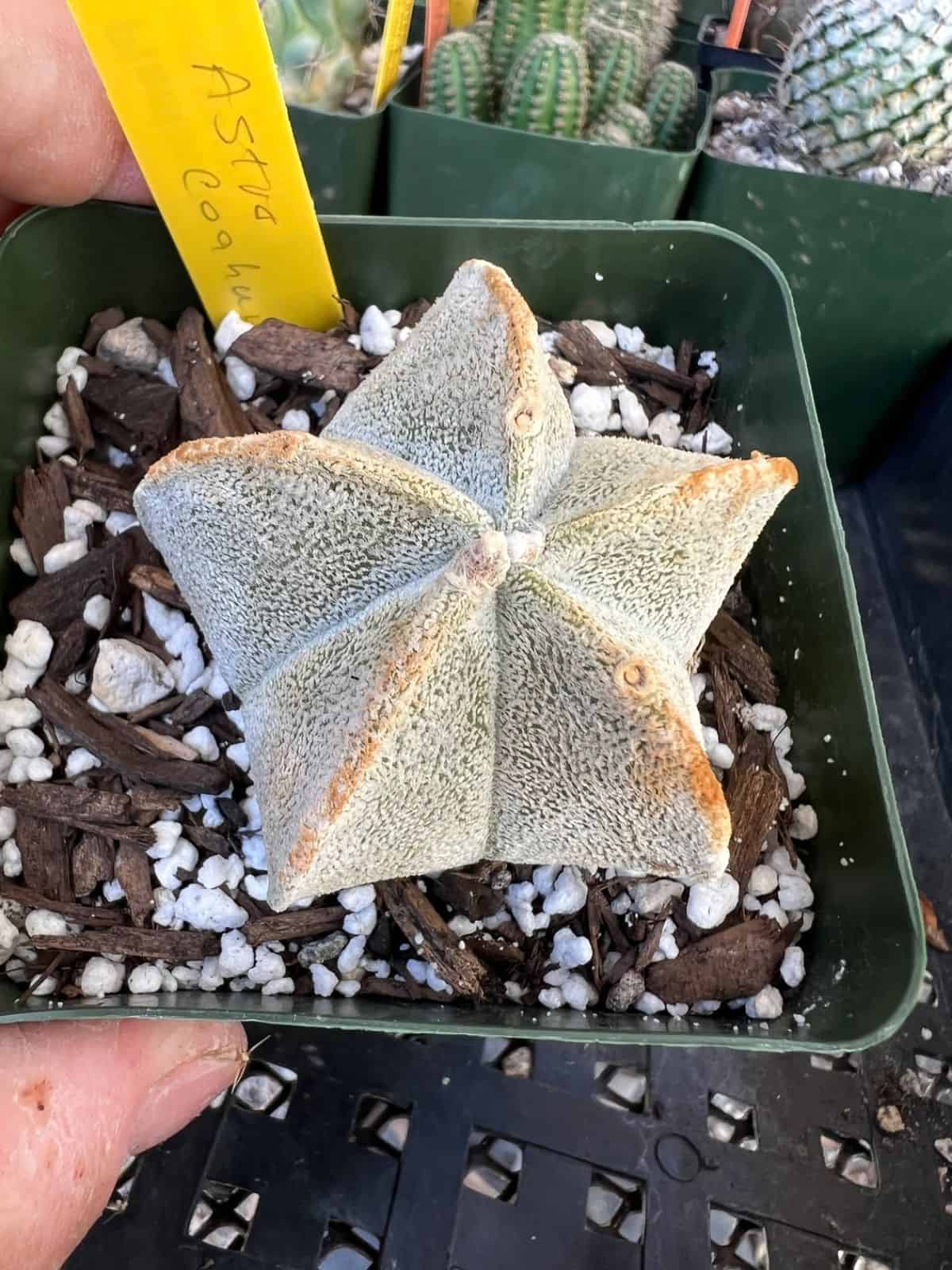
Buy it from:
| Maximum Height: | Up to 3 feet |
| Maximum Width: | Up to 8 inches |
| Watering Needs: | Responds best to the soak-and-dry method |
| Soil Needs: | Well-draining and gritty soil |
| Light Needs: | At least 6 hours of sun outdoors for best results |
| Hardiness Zone(s): | Zone 7 and up |
| Stem Shape: | Starts with five ribs but turns more globose and columnar as it grows |
| Spines: | Non-existent |
| Areole Distribution: | Evenly distributed along the ribs |
| Scale Type: | Covered completely with white scales |
| Flower Type and Color: | Trumpet-shaped with traditional red throat and yellow edges; however, flowers can be completely yellow or completely yellow |
In younger stages, A. coahuilense has a perfectly whorled star shape. It is one of the two main species that remains covered with white scales, and the pattern is generally random. It is considered to be closely related to A. myriostigma however the growth, blooming, and environmental differences separate the species quite clearly.
Astrophytum coahuilense cv. Hakuran Kikko
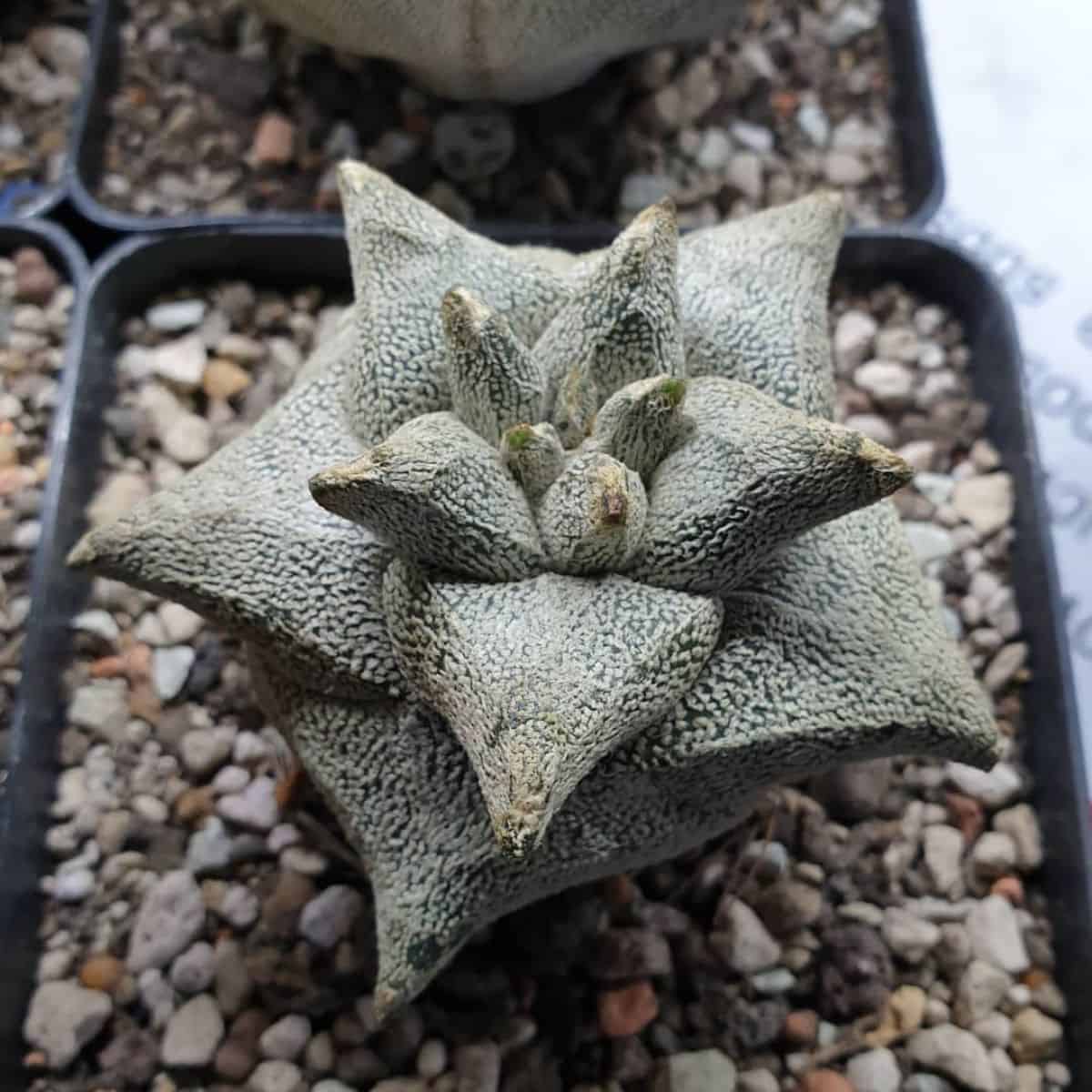
Buy it from:
As you’ll notice, many, if not most, of the cultivars, have some form of Kikko in their names. This is because of the natural way that the cultivars split into hexagonal sections that look like interlocking segments of samurai armor. The interesting thing that sets this cultivar apart is that while it does grow in the typical star shape, it tends to look more like a starfish at the top of the plant. Some images will show new growth that looks exactly like a starfish. As it grows older, the ‘ribs’ can grow closer to one another and fill out a little more.
Astrophytum coahuilense cv. Caespitosa
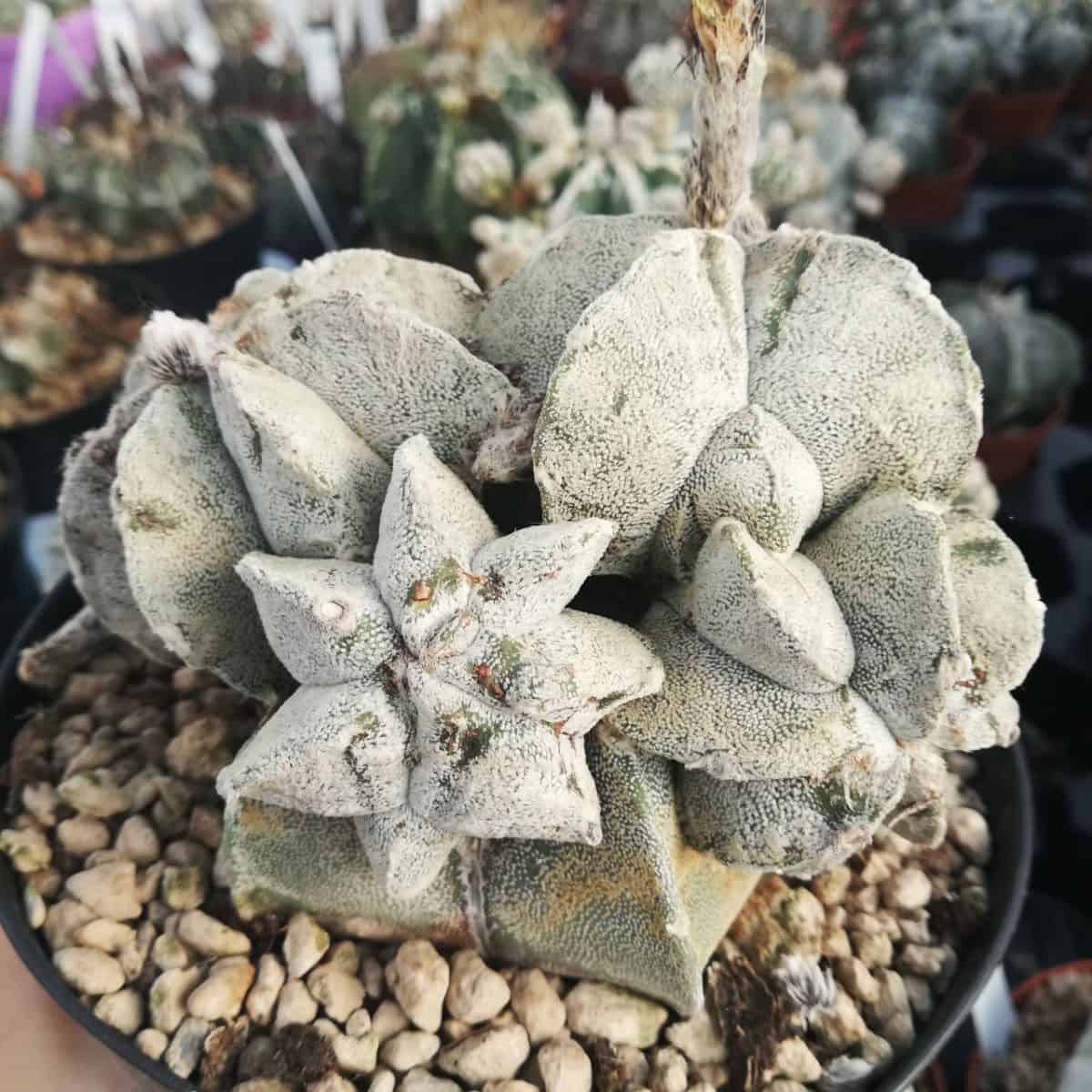
Also known as Little Flower, this is one of the few cultivars among the astrophytum genus that branches profusely. The reason that it has the name Little Flower is that each of the new branches looks like the beginning of a new star flower.
They grow into column shapes with each branch, but the growth can take some time; branching often occurs when the cultivar is young and further branching will occur with age.
4. Astrophytum caput-medusae
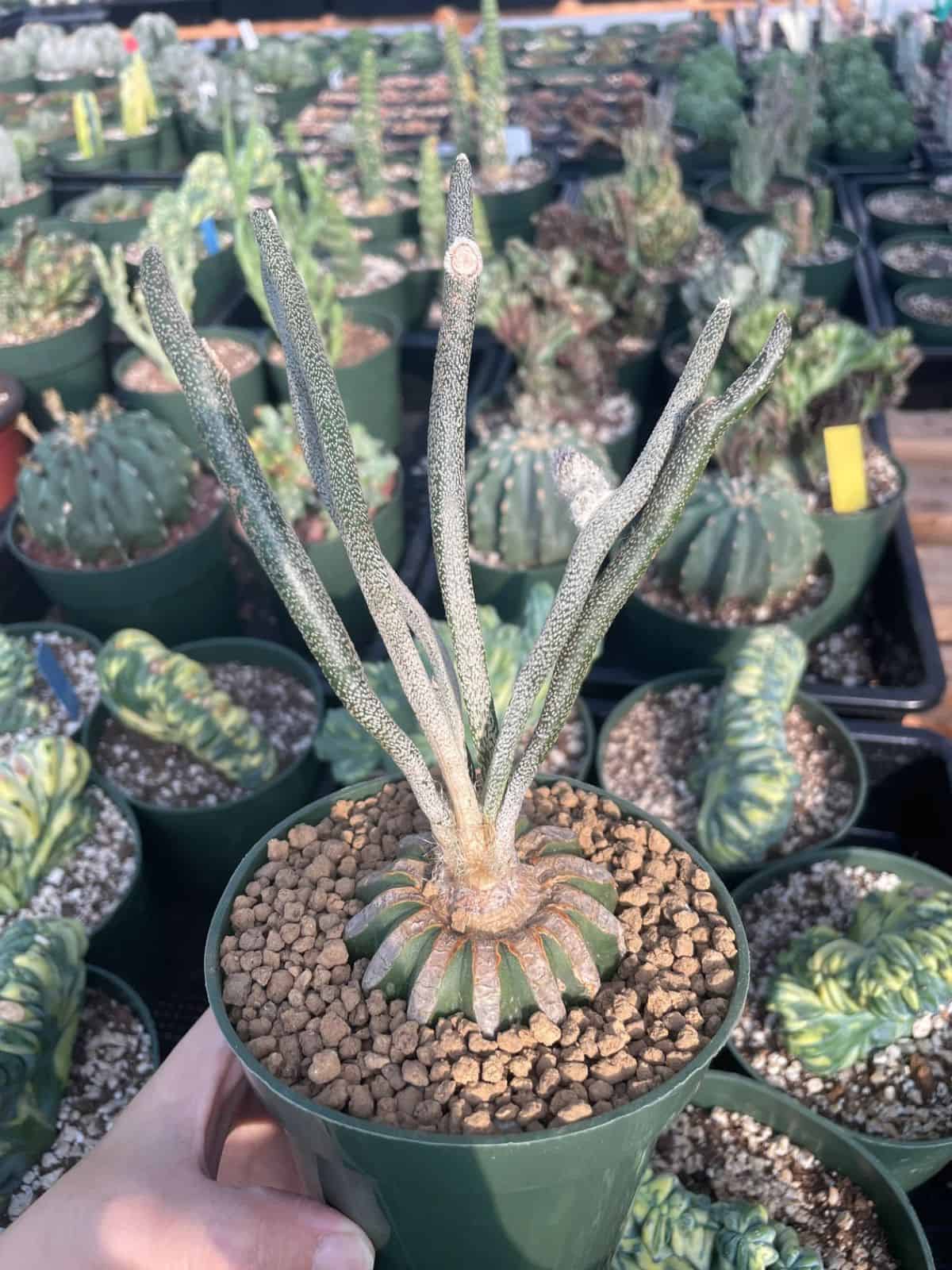
Buy it from:
| Maximum Height: | Tubercles up to 7.5 inches |
| Maximum Width: | Undetermined |
| Watering Needs: | Responds best to the soak-and-dry method |
| Soil Needs: | Well-draining and gritty soil |
| Light Needs: | At least 6 hours of sun outdoors for best results |
| Hardiness Zone(s): | Zone 9 and up |
| Stem Shape: | Base stem that is rarely above ground. The leaf-resembling tubercles take on a hair-like and undulate growth. |
| Spines: | More thorn shaped and often hard to find. |
| Areole Distribution: | Mainly at the base of the plant and covered with straw-colored hairs. |
| Scale Type: | Tubercles are covered with white hairs |
| Flower Type and Color: | More lotus shaped than other species with the same yellowish color. Takes on a more orange color with the characteristic trumpet shape. |
Now here is my favorite of the genus. It is so strange how this species grows; it truly looks like Medusas head! The base of the cactus stays more underground than other species in the genus, but then there are the many tubercles that form from that stem.
At the base of each of the tubercles, there are straw-colored spines and glochids that make it look rather hairy at the base. The lotus-shaped flowers are interesting as they don’t grow from the tip of the tubercle but instead branch off from the sides of the tubercles. It’s truly a fascinating difference compared to the other species in this genus!
5. Astrophytum myriostigma
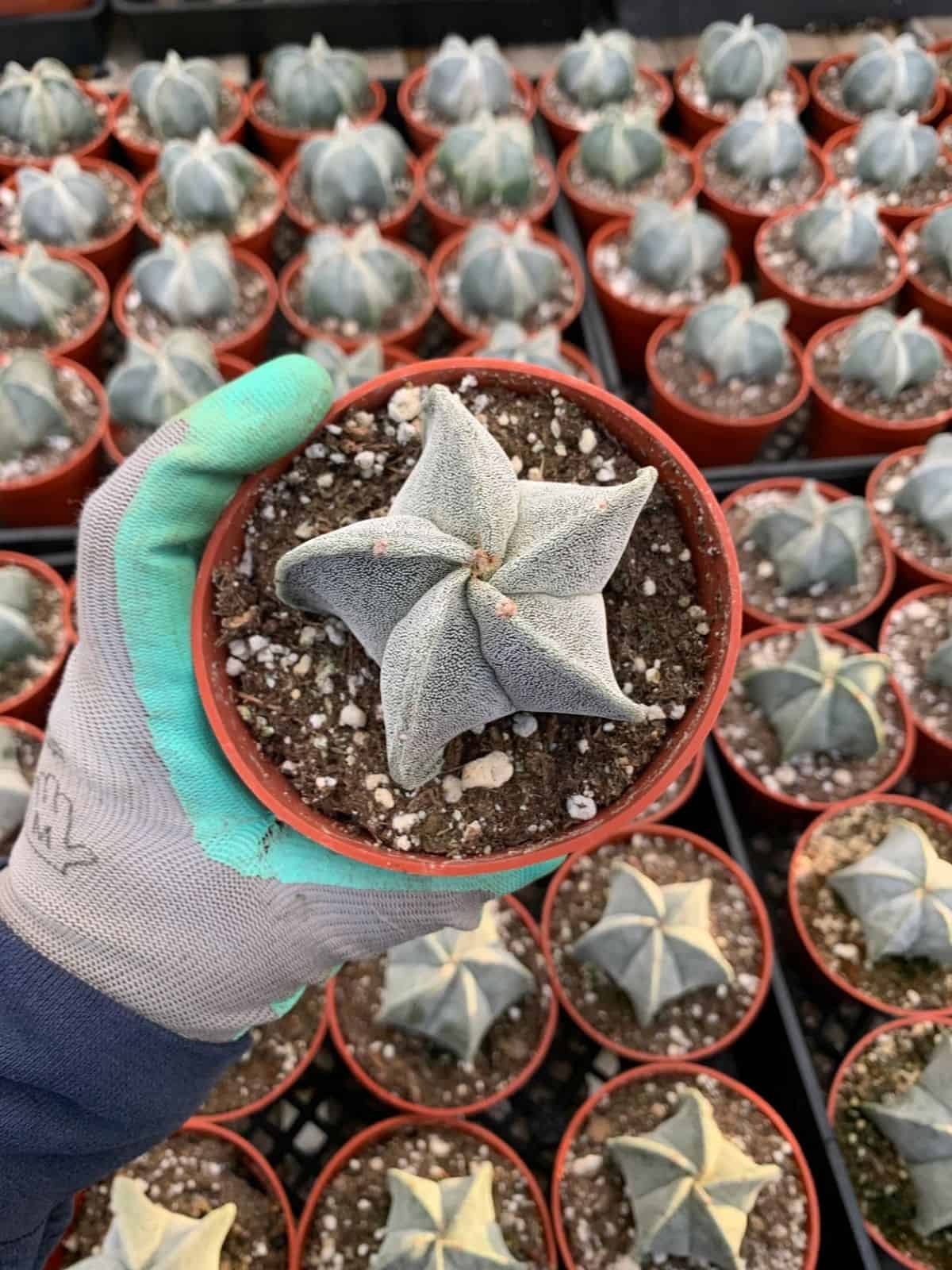
Buy it from:
| Maximum Height: | Up to 3 feet |
| Maximum Width: | Up to 8 inches |
| Watering Needs: | Responds best to the soak-and-dry method |
| Soil Needs: | Well-draining and gritty soil |
| Light Needs: | At least 6 hours of sun outdoors for best results |
| Hardiness Zone(s): | Zone 9 and up |
| Stem Shape: | Begins with a star shape that grows upwards into a columnar/globulose shape |
| Spines: | No spines |
| Areole Distribution: | Very close together along the ribs |
| Scale Type: | Covered with scales |
| Flower Type and Color: | Funnel-shaped and multi-layered, silky in appearance and yellow. |
The common name for this species is Bishop’s Cap due to the perfect star cross-section the plant has. There are many variants of this species, from the speckless to the fully speckled. One thing that unites the cultivars is that there is a distinct lack of spines that are produced from the very conspicuous areoles. As it grows, it will maintain the star shape more so than other species in this genus.
Astrophytum myriostigma cv. Kikko
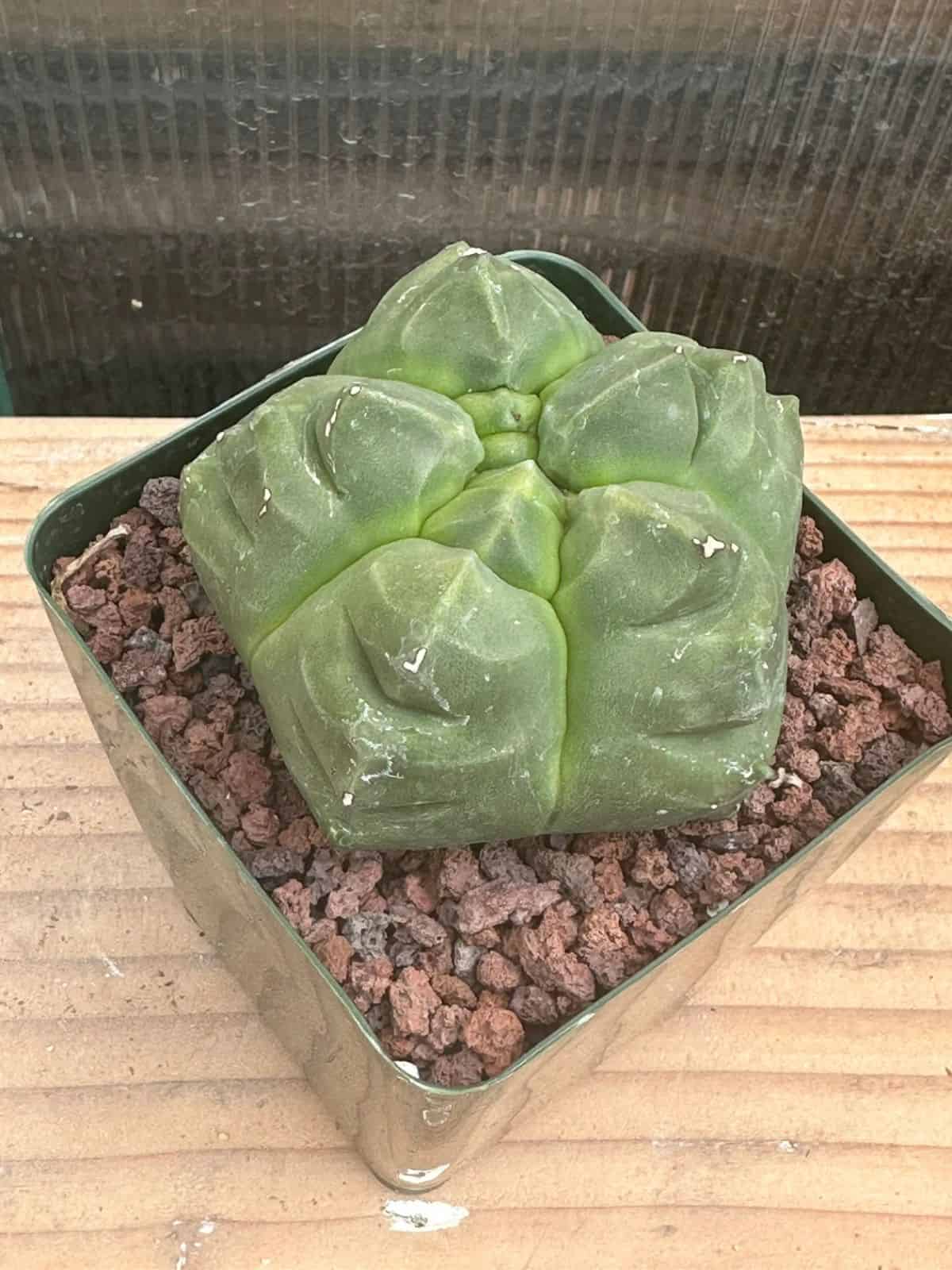
Buy it from:
The Kikko variant for A. myriostigma holds true to most of the primary characteristics of the species. The major differences are a lack of white scales and pronounced steps along the ridges themselves, with some hexagonal sections towards the center of the stem. It is lighter in color than other cultivars, and the areoles are also less pronounced.
Astrophytum myriostigma columnare
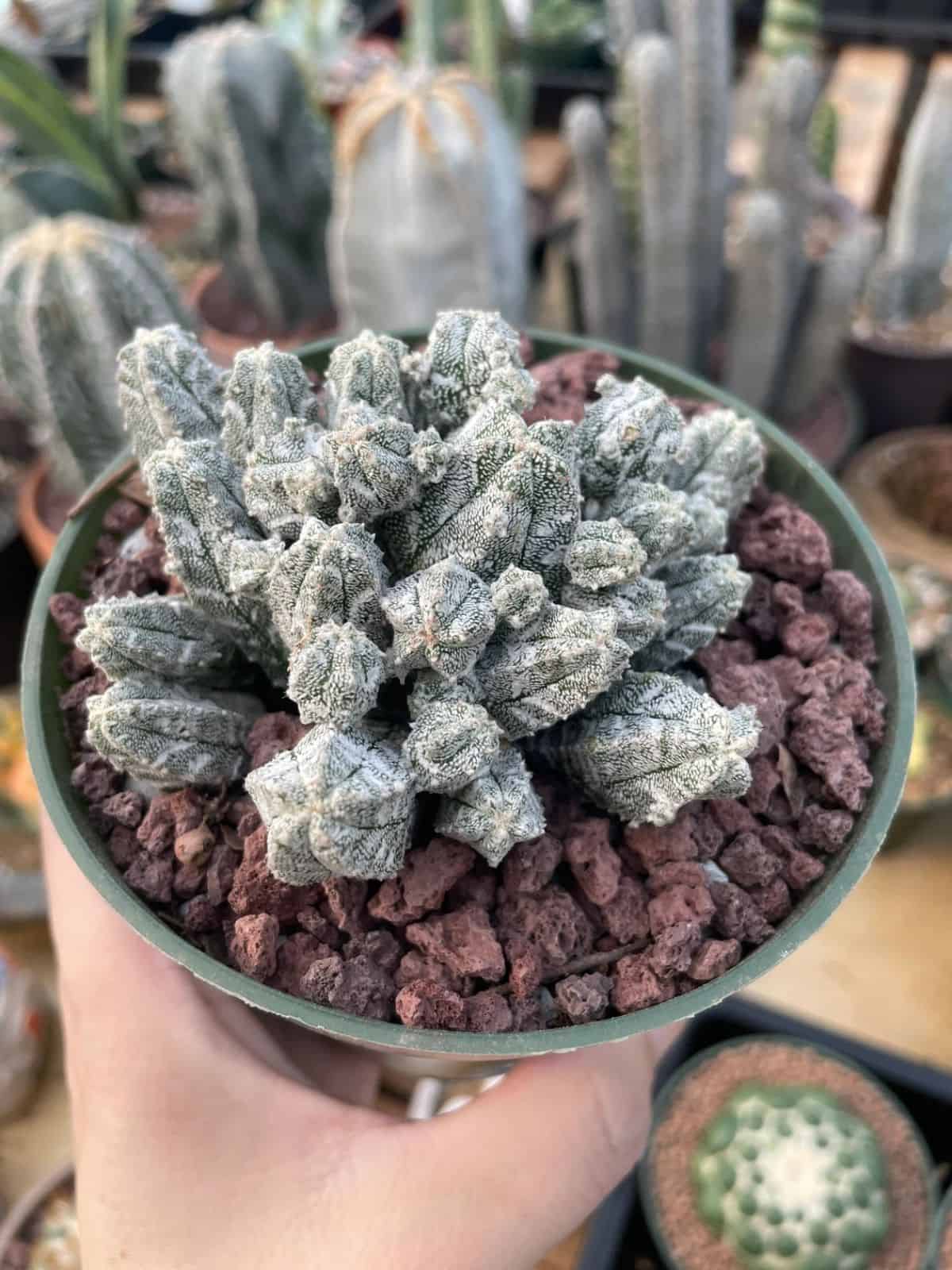
Buy it from:
A hard-to-come-by cultivar, A. myriostigma columnare is a special cultivar because it branches incessantly. In fact, it’s almost completely branching from a young age. There may be an initial stem, but as soon as the species gets just a little older than a year, it will constantly branch: it may even branch before then! It maintains the other characteristics of the species with a coat of white scales and a distinct lack of spines.
6. Astrophytum ornatum
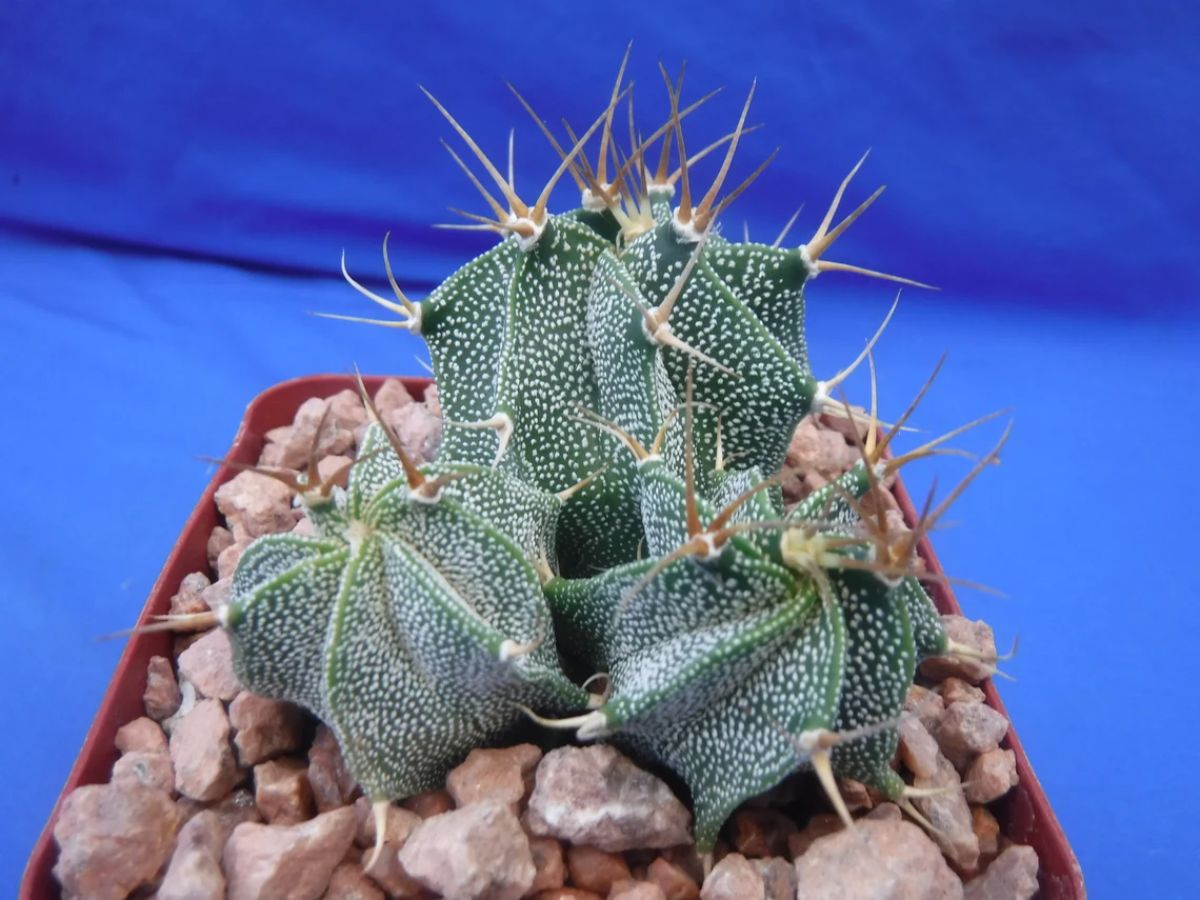
Buy it from:
| Maximum Height: | Over three feet |
| Maximum Width: | Up to 12 inches |
| Watering Needs: | Responds best to the soak-and-dry method |
| Soil Needs: | Well-draining and gritty soil |
| Light Needs: | At least 6 hours of sun outdoors for best results |
| Hardiness Zone(s): | Zone 9 and up |
| Stem Shape: | Globe-like when young and columnar as it ages, distinct ribs (5-10) |
| Spines: | 1 longer central spine with 5-11 firm radial spines |
| Areole Distribution: | Evenly spaced along the ribs (from ¼ inch to 2 inches apart) |
| Scale Type: | Covered when young, as it grows older, the white scales take on a ‘v’ shape along the column |
| Flower Type and Color: | Funnel like with wooly bases and buttery yellow petals |
From what I have been able to understand about A. ornatum, is that it is more decorative due to the even spacing of the white scales and the strength of the spines that curve outward from the areoles. While the spines aren’t crazily bent and wrapped around the cactus, they add a small element of protection and are far less fragile.
Astrophytum ornatum cv. Spiral
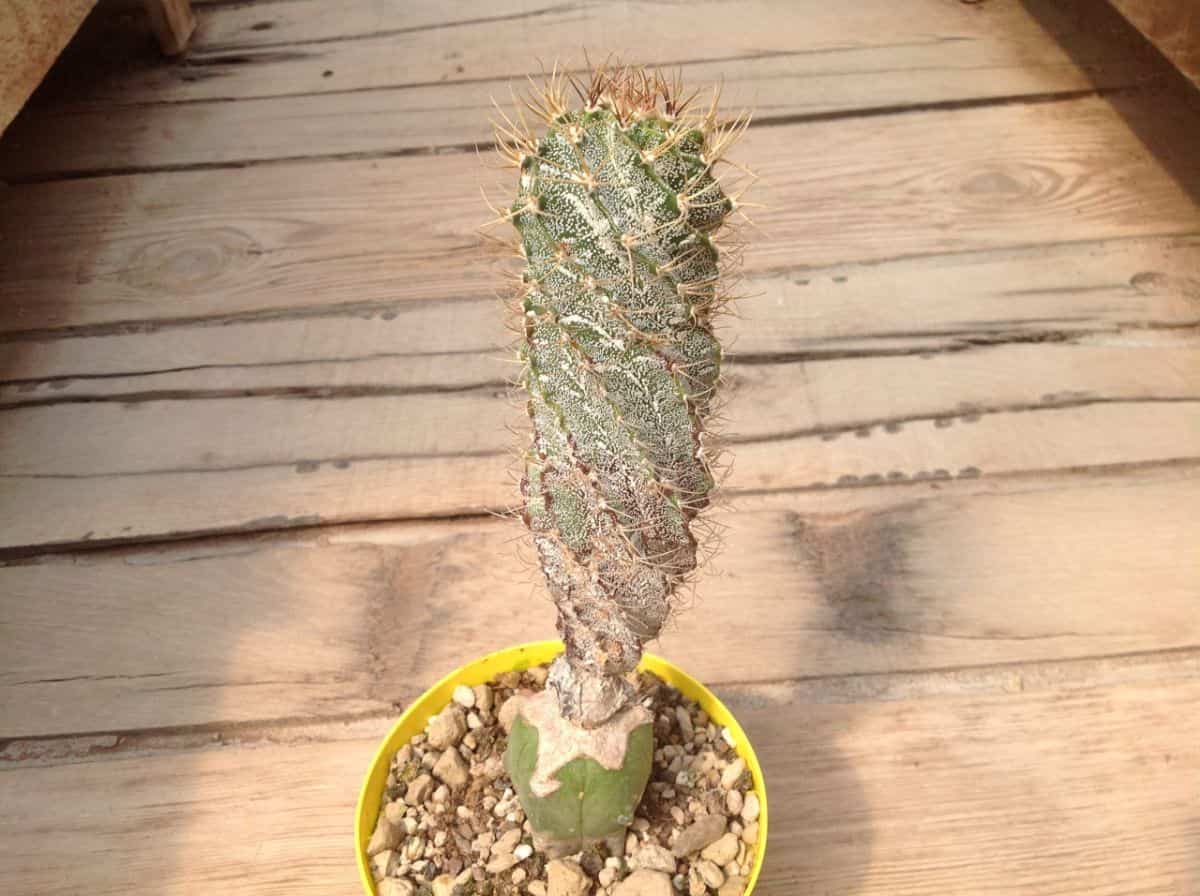
There are few species in the cactus and succulent world that take on spiral-like shapes; this is one of those few. It maintains the characteristics of the parent species with spines that rotate along with the rotation of the ribs of the stem. The areoles also produce more glochids which makes them look very fuzzy compared to other A. ornatum variants.
Astrophytum ornatum cv. Fukuryu Hania
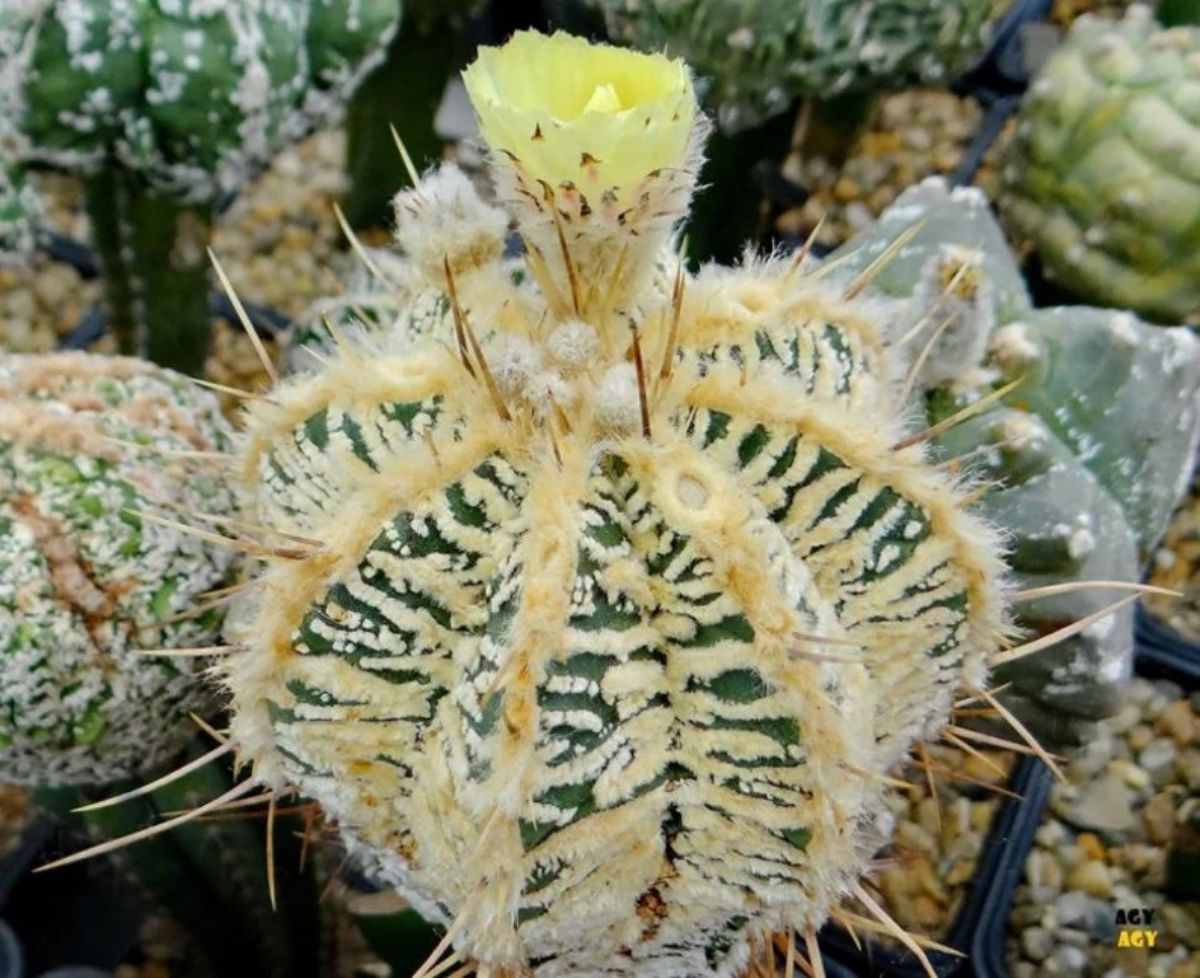
Buy it from:
In my research on this species, it is sometimes called the Dinosaur plant because of the amount of scales that are present along the ribs. In my opinion, it is one of the most ornate of the species (no pun intended). Not only are the areoles extremely fluffy with glochids, but the spines are straight and rather short, and they are also black, which contrasts well with the white-scaled skin of the stem. There are also additional raised areas along the stem that can grow and alter as the plant ages.

